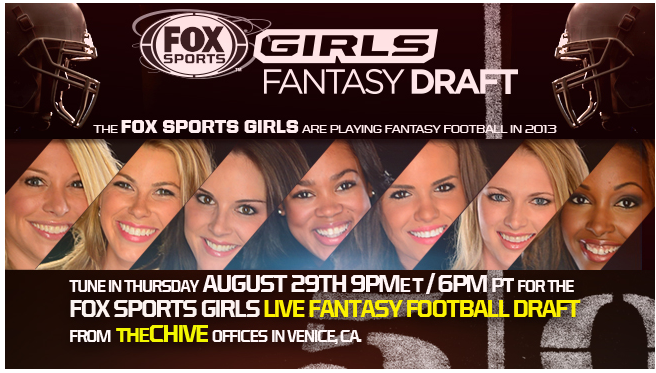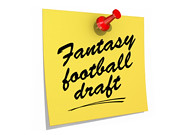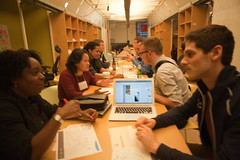The following is a collection of films, both fiction and non-fiction, that have been recommended for use in a Sport and Society course.
We encourage you to recommend additional films, readings to be used alongside the films, or tell us about your experience.
*Special thanks to the NASSS community for providing so many suggestions.
Sport Films (Non-fiction):
- Go Tigers! (2001)
- Jump! (2007) – Awesome jump rope documentary
- Rocks with Wings (2002) (dir: Rick Derby)
- 100% Woman: the Michelle Dumaresq Story (2004)
- Golden Gloves (or the Real Million Dollar Babies) (2007)
- A League of Their Own (the documentary film) (1993)
- Training Rules (2009) – It concerns the scandal around former Penn State Women’s Basketball Coach, Rene Portland. Maybe available on Hulu.
- When We Were Kings (1996)
- Playing Unfair (2002)
- Chasing October
- Football Under Cover
- Pink Ribbons, Inc. (2011) – Samantha King
- A Hero for Daisy (1999) – a documentary about Title IX and rowing
- PBS series “American Experience” has an episode on Jesse Owens – you can screen it online.
Ahead of the Majority – It covers Patsy Mink’s political career and includes a section on her involvement in the politics of Title IX. - Bigger, Stronger, Faster (2008) – examples of hegemonic masculinity and how the media influences males’ self-images (not just females, as is so commonly discussed).
- Hoop Dreams (1994) – [can be combined with the chapter by C.L. Cole and Samantha King, “The New Politics of Urban Consumption: Hoop Dreams, Clockers, and America,” in Ralph C. Wilcox, ed., Sporting Dystopias: The Making and Meaning of Urban Sport Cultures, pp. 14, 221-246.]
- Viva Baseball
- Unforgivable Blackness: The Rise and Fall of Jack Johnson (2004)
- In Whose Honor
- Not Just A Game (2010) – Dave Zirin provides a sociological analysis of how sport influences our society, particularly the parallels between the institution of sport and the military.
- Pursuing the Perfect 10 – This was a CNN documentary that is available on YouTube in several parts. I used it as a review after lessons on youth sports and deviance in sports
Link: http://www.youtube.com/watch?v=AvMpy6kEOZM - An Enforcer’s Story – This is a documentary style video available in conjunction with a piece that ran in the NY Times about hockey enforcer Derek Boogaard’s death.
Link: http://www.nytimes.com/2011/12/04/sports/hockey/derek-boogaard-a-boy-learns-to-brawl.html ) - Murderball (2005) – documentary film about tetraplegic athletes who play wheelchair rugby. It centers on the rivalry between the Canadian and U.S. teams leading up to the 2004 Paralympic Games.
- Junior –documentary that follows a Canadian Hockey League team from the Quebec Major Junior Hockey League called Baie-Comeau Drakker
http://www.nfb.ca/film/Junior_en - Head Games (2012) – related to concussion and sport.
- More Than a Game – Documents the early career of the heralded LeBron James’ high school experiences.
- FIT: Episodes in the History of he Body (1991). This focuses on the history of the how we understand a ‘fit’ body, including analysis related to race, social class, gender, disability and age.
- The Journey of the African American Athlete” (Parts 1 and 2)
- Blood on the Flat Track – documentary on the rat city roller girls
- Sonicsgate: Requiem for a Team
- Joe Louis – America’s Hero Betrayed
- Two Days In April – follows four NFL prospects through the process of preparing for and participating in the 2006 NFL Draft
- 4th and Goal – Tale of six men trying to make it to the NFL
- Undefeated – Oscar-winning 2011 documentary directed by Daniel Lindsay and T.J. Martin. The film documents the struggles of a high school football team, the Manassas Tigers of Memphis, as they attempt a winning season after years of losses.
- Born and Bred – documentary following young latino boxers in LA
- The Morgan Lacrosse Story (pbs) – This film tells the story of the nation’s first and only college lacrosse team at a historically black institution.
- Gridiron & Steel – Western Pennsylvania and football
- On the Shoulders of Giants – Story of the Harlem Rens
- Bra Boys (2007) – A movie about a particularly hyper-masculine group of male surfers (the Bra Boys) in Sydney, Australia. A good example of a fratriarchal sporting group, and all the problematic aspects associated with such groupings. Can be used in conjunction with the critique from Clifton Evers in the Sydney Morning Herald: http://www.smh.com.au/news/opinion/false-prophets-of-surfing-bastardise-our-beaches/2007/03/12/1173548110229.html
- Dogtown and Z Boys (2001) – The development of skateboarding in Southern California, great for revealing subcultural dynamics.
- First Descent (2005) – A history of snowboarding and insight into the gender and age dynamics within core action sport groups.
- This Ain’t California (2012) – In German with English subtitles, but offers a fascinating perspective on the development of skateboarding (and youth counter cultures) in East Berlin during the 1980s.
- STRONG! – an awesome new documentary on Cheryl Hayworth, Olympic weightlifter. It deals well with questions of athleticism, gender, and normativity. http://strongthefilm.com/
- Offside (2006) – from Iran. Interesting to look at cross-cultural understandings and expressions of gender. It looks at how gender is used to define spaces of sport: specifically the soccer stadium.
- Fearless (2012) – about Sarah Burke and top athletes who risk their life for high performance sport
- The Legacy of Brendan Burke (2010) – about Brendan Burke, homosexuality, hockey.
- The Code (2010) – about hockey’s unwritten law of fighting and the men who live by it.
- The Rise and Fall of Theo Flury – (Part 1, 2008) (Part 2, 2010), about sexual abuse, homosexuality, masculinity in Junior A hockey (and professional hockey)
- The Other Final – Made by two Dutch filmmakers who were dismayed that the Dutch national team did not make the 2002 World Cup, they arranged to have the then two bottom-ranked (by FIFA), Bhutan and Montserrat, to play a match.
- A State of Mind (2004) – on the mass games in N. Korea.
- Sumo East and West
- The Game of Their Lives (2002) – by Daniel Gordon on the N. Korean 1966 World Cup Team.
- Kokoyakyu: High School Baseball – On high school teams competing in Japan’s famous national “Koshien” tournament.
- Tokyo Olympiad parts – great for considering how Japan sought to represent itself during the 1964 Games.
- A Normal Life: Chronicle of a Sumo Wrestler (2009)
- Gaea Girls (2000) – on female wrestlers in Japan.
- Brighton Bandits (2007) – first ever in-depth documentary about a gay soccer team
trailer: http://www.youtube.com/watch?v=kvKN3X_RCxY - Justin (2008) — about gay footballer Justin Fashanu and a campaign against homophobia
trailer: http://www.youtube.com/watch?v=3_o1IEhRuiE&list=UUoLTOkSW0_Taj3iL9KTi44w&index=7 - Algorithm (2012) – gorgeous film about blind chess players in India
trailer: http://www.youtube.com/watch?v=pHVZD2yrb7k&list=UUoLTOkSW0_Taj3iL9KTi44w&index=5
- River of Life –about the breast cancer survivor voyageur canoe team “Paddlers Abreast” competing in the Yukon River Quest wilderness canoe race – 740 kms/460 miles in three days. Available for purchase (about $20 or so) through the NFB of Canada and free here: http://www.nfb.ca/film/river_of_life/
30 for 30 (ESPN series) – many documentaries that could be useful for teaching.
Sport Films (Fiction):
- Friday Night Lights
- North Dallas Forty
- Girlfight
- Eight Men Out
- The Fighter
- Invictus
- Sugar – You can use this to talk about sports migrants, race, and ethnicity
- Bingo Long Traveling All Stars and Motor Kings
- Varsity Blues
- Coach Carter
- Hurricane Season
- Bend it Like Beckham
- Chariots of Fire – discuss sport and early 20th century nationalism








